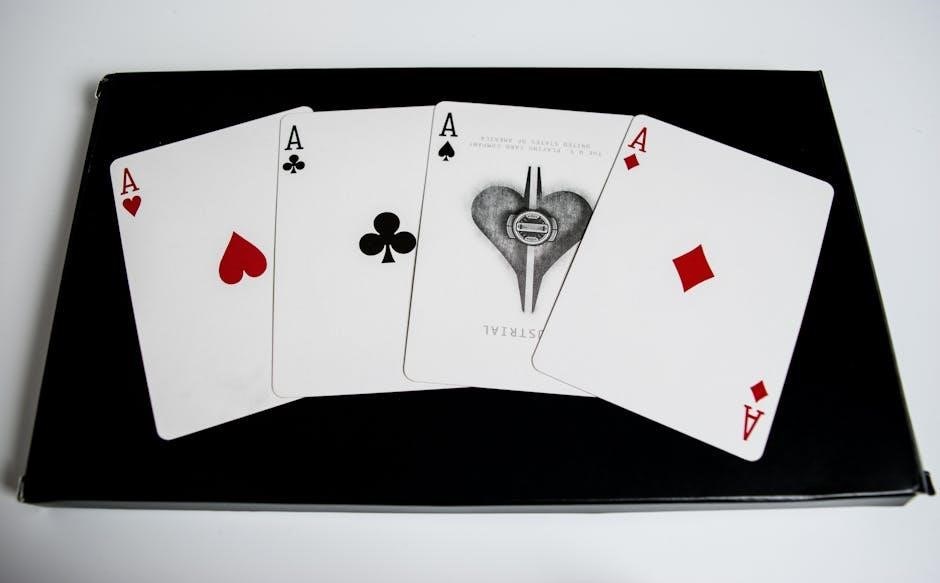Voodoo symbols, particularly veves, are central to Vodou traditions, serving as visual representations of Loa, the spirits, during rituals and ceremonies, bridging the physical and spiritual realms․
1․1 Definition and Overview
Voodoo symbols, such as veves, are intricate drawings used in Vodou traditions to represent Loa, or spirits․ These symbols act as visual representations of deities and are central to rituals and ceremonies, serving as a bridge between the physical and spiritual realms․ Veves are typically created using materials like cornmeal, flour, or coffee, and each symbol corresponds to a specific spirit, embodying its essence and attributes․ They are not merely decorative but hold deep spiritual significance, facilitating communication with the divine․ The cross, for instance, is a universal and ancient symbol in Vodou, often representing the connection between life, death, and the afterlife․ These symbols are integral to Vodou practices, reflecting the rich cultural and spiritual heritage of the tradition․
1․2 Historical Background
Voodoo symbols, such as veves, trace their origins to African diasporic traditions, deeply rooted in the spiritual practices of enslaved West Africans in Haiti․ These symbols emerged as a blend of African, indigenous, and European influences during the colonial period․ Veves were originally used in rituals to honor the Loa, serving as a means to connect with the divine․ Over centuries, these symbols evolved, incorporating elements from Catholicism and other cultures, while retaining their African spiritual core․ The creation and use of veves were often tied to specific ceremonies and rituals, passed down through generations․ Despite persecution and suppression, Voodoo symbols persisted, becoming a cornerstone of Haitian Vodou and other related traditions․ They reflect the resilience and adaptability of African spiritual practices in the face of historical challenges, preserving a rich cultural and religious legacy․
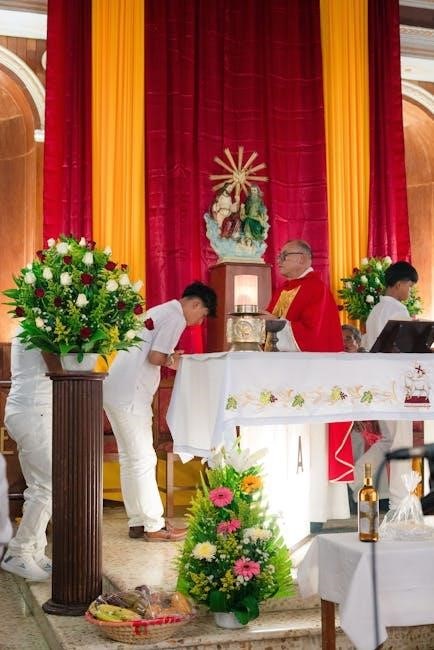
Understanding Veves
Veves are intricate symbols used in Voodoo rituals, representing specific Loa and serving as gateways for spiritual communication, created with materials like cornmeal or flour to honor the divine․
2․1 Purpose and Significance
Veves hold profound spiritual significance in Vodou, acting as conduits to connect practitioners with the Loa․ They are meticulously drawn during rituals to honor specific spirits, ensuring their presence and guidance․ The intricate designs serve as visual representations of the Loa’s essence, embodying their attributes and powers․ By creating these symbols, practitioners establish a sacred space for communication, allowing the Loa to manifest and influence the physical world․ The veve’s purpose extends beyond art; it is a powerful tool for invoking divine energy and maintaining balance between the spiritual and material realms․ Their significance lies in their ability to facilitate meaningful interactions, making them indispensable in Vodou ceremonies and practices․
2․2 Creation Process
The creation of veves is a meticulous and sacred process in Vodou, typically performed by houngans (male priests) or mambos (female priests)․ These symbols are drawn on the ground using materials like cornmeal, coffee, or flour, and their complexity varies depending on the Loa being honored․ Each veve is carefully crafted to reflect the specific attributes and essence of the spirit it represents, often incorporating geometric patterns and symbolic elements․ The process begins with purification rituals to prepare the space, followed by the precise drawing of the veve․ The intention and focus of the practitioner are crucial, as the veve serves as a gateway for the Loa to manifest․ This deliberate and sacred act ensures the veve’s effectiveness in rituals, making it a cornerstone of Vodou practices․
2․3 Cultural Significance
Veves hold profound cultural significance in Vodou traditions, serving as a bridge between the spiritual and physical worlds․ These intricate symbols embody the cultural heritage and beliefs of Vodou practitioners, reflecting their deep connection to ancestral traditions․ Originating from African diasporic practices, veves have evolved to incorporate elements from various cultural influences while maintaining their core spiritual purpose․ They are not merely decorative but carry deep symbolic meanings tied to specific Loa and their attributes․ The creation and use of veves in rituals and ceremonies reinforce communal identity and shared faith, preserving the history and values of the Vodou community․ Their enduring presence in modern practices highlights their adaptability and the resilience of Vodou culture, ensuring their relevance across generations and contexts․
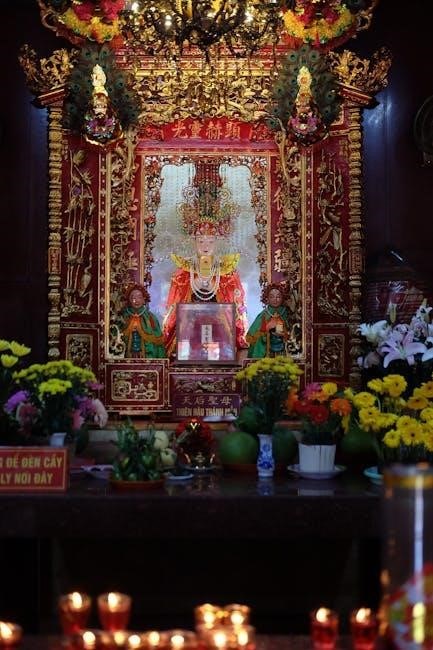
Key Voodoo Symbols
The Cross, Papa Legba’s Veve, Erzulie Freda’s Symbol, and Baron Samedi’s Veve are prominent, each representing distinct Loa and their roles in Vodou traditions and rituals, symbolizing spiritual connection and harmony․
3․1 The Cross
The Cross is one of the oldest and most universal religious symbols, appearing in various cultures and traditions, including Vodou․ It represents the connection between the physical and spiritual realms, often symbolizing the sun, sky, and cosmic balance․ In Vodou, the Cross is deeply intertwined with the Loa, acting as a bridge between the worlds․ Its presence in rituals and ceremonies highlights its significance in facilitating communication with the divine․ The Cross is also a symbol of life, death, and renewal, embodying the cyclical nature of existence․ Its ubiquity across cultures underscores its timeless and enduring spiritual importance, making it a cornerstone in Vodou practices and symbolism․
3․2 Papa Legba’s Veve
Papa Legba’s veve is a intricate symbol representing his role as the guardian of crossroads and the intermediary between the physical and spiritual worlds․ This veve often features a crossroads motif, with lines and shapes that symbolize his ability to open or block communication with other spirits․ In Vodou rituals, Papa Legba’s veve is drawn to invoke his presence and seek his permission to interact with other Loa․ The symbol is deeply associated with the principles of communication, travel, and the balance between different realms․ Its design reflects the harmony and power that Papa Legba embodies, making it a vital element in Vodou ceremonies and spiritual practices․
3․3 Erzulie Freda’s Symbol
Erzulie Freda’s symbol, or veve, is a beautiful and intricate representation of her association with love, beauty, and luxury․ This veve often features elegant designs, incorporating elements like hearts, flowers, or jewels, which reflect her role as the Loa of love and wealth․ The symbol is used in Vodou rituals to invoke Erzulie Freda, helping practitioners connect with her energies for matters of the heart and material abundance․ The creation of her veve typically involves precise patterns and materials, such as powders or cornmeal, to honor her refined and nurturing spirit․ Erzulie Freda’s veve is not only a tool for spiritual communication but also a celebration of the beauty and grace she embodies, making it a cherished element in Vodou traditions and art․
3․4 Baron Samedi’s Veve
Baron Samedi’s veve is a striking and complex symbol associated with the Loa of death, resurrection, and fertility․ This veve often features a central cross, symbolizing the crossroads between life and death, adorned with imagery such as skulls, coffins, and phallic symbols, reflecting his dual role in mortality and fertility․ The design is bold and intricate, using contrasting colors like black, white, and red to emphasize his powerful and mysterious nature․ In Vodou rituals, Baron Samedi’s veve is drawn to invoke his guidance in matters related to transition, protection, and renewal․ His symbol is also a reminder of the cyclical nature of life and death, embodying both endings and new beginnings․ The veve’s creation is meticulous, ensuring its accuracy to honor Baron Samedi’s significance as a guardian of the dead and a facilitator of spiritual communication․
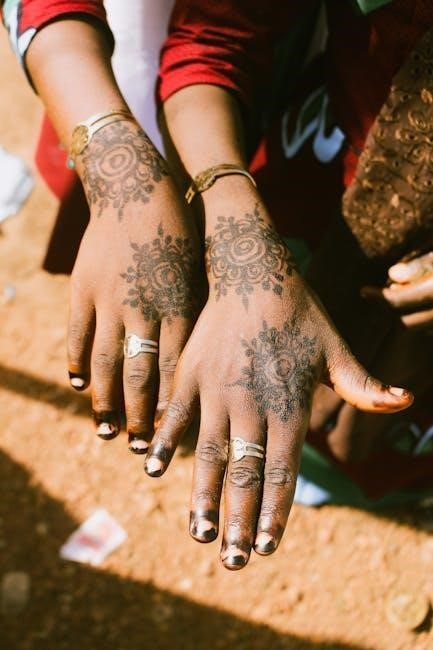
Historical and Cultural Context
Voodoo symbols, deeply rooted in African traditions, evolved in Haiti through the African diaspora, blending indigenous and European influences, forming the foundation of Haitian Vodou practices and beliefs today․
4․1 Origins of Veves
The origins of veves trace back to traditional African religious practices, where similar symbols were used to communicate with spirits․ These symbols were brought to the Caribbean by enslaved Africans, who adapted them to their new environment․ In Haiti, veves evolved into intricate designs made from materials like cornmeal or flour, becoming central to Vodou rituals․ Each veve represents a specific loa, embodying their attributes and powers․ The creation of veves is deeply spiritual, requiring precision and intention to invoke the loa effectively․ Their origins reflect the resilience and creativity of African diasporic communities, blending ancient traditions with new cultural influences to form a unique spiritual practice․
4․2 African Influence
African traditions significantly shaped Vodou symbols, particularly veves, which draw from ancestral religious practices․ Adinkra symbols from Ghana, such as Gye Nyame, symbolizing God’s supremacy, influenced Vodou imagery․ These symbols, embodying values and aspects of life, were adapted into veves, reflecting the connection between African and Haitian spiritual systems․ Enslaved Africans brought their religious practices to the Caribbean, blending them with local elements to form Vodou․ The use of symbols like crosses and other cosmograms highlights the enduring influence of African spirituality․ These symbols maintain cultural identity and continue to evolve, preserving the legacy of African traditions in Vodou․
4․3 Evolution in Haiti
Vodou symbols evolved in Haiti as African traditions blended with local and Catholic influences․ Enslaved Africans brought their spiritual practices, which merged with indigenous and European elements, creating unique Vodou symbols․ Veves became central, representing Loa and facilitating communication between realms․ These intricate designs, often made from natural materials, symbolized spiritual and cultural resilience․ Haitian Vodou adapted to the Caribbean environment, incorporating local plants and rituals․ Over time, the symbols gained deeper meanings, reflecting the community’s history and struggles․ Despite persecution, Vodou thrived, preserving African heritage while evolving into a distinctly Haitian practice․ Today, these symbols remain vital, connecting practitioners to their ancestors and cultural identity․ Their evolution mirrors Haiti’s history, blending tradition with adaptability to sustain a vibrant spiritual legacy․
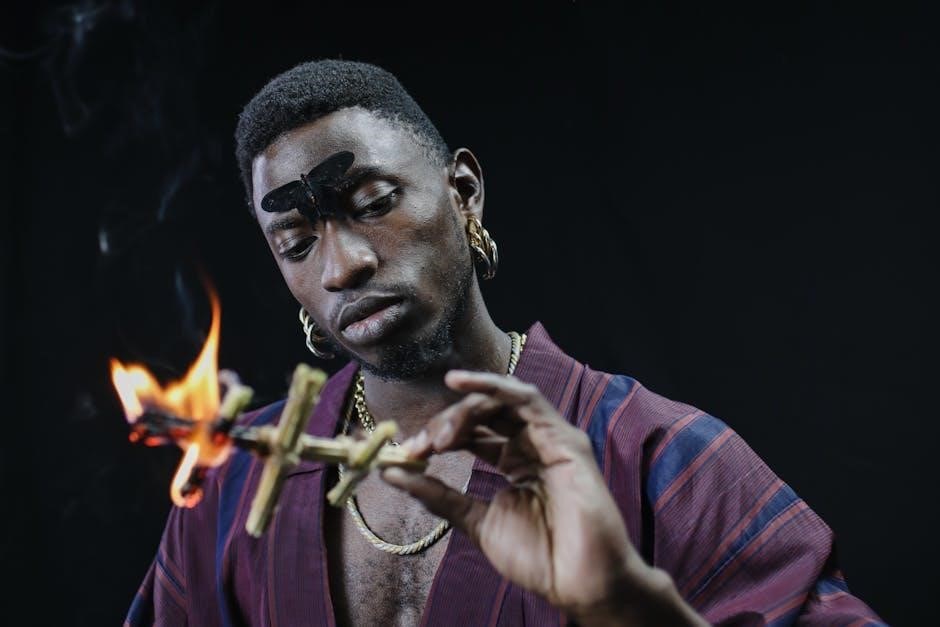
Practical Uses of Voodoo Symbols
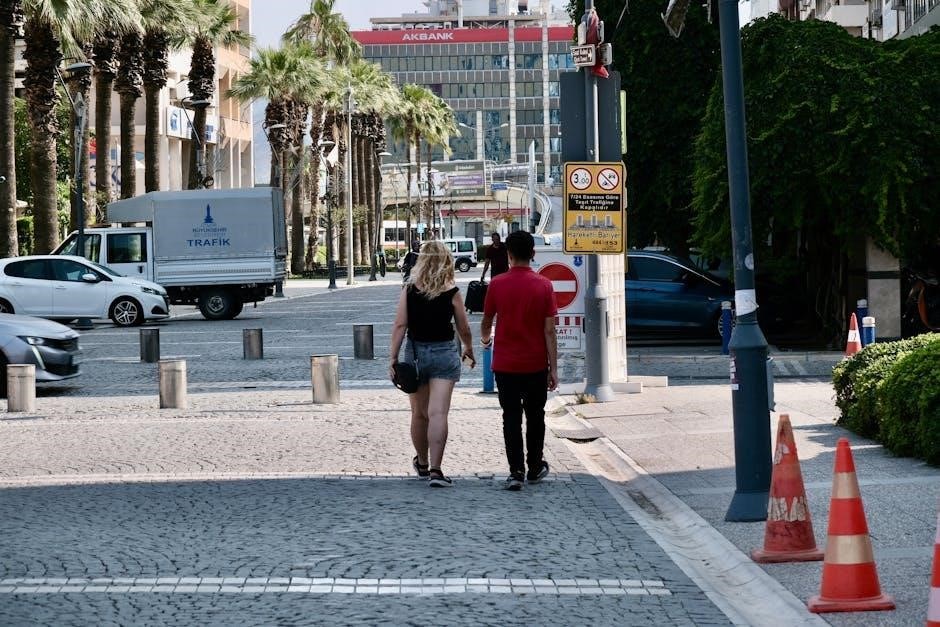
Voodoo symbols, like veves, are used in rituals, ceremonies, and altar setups to connect with Loa․ They also appear in modern applications such as tattoos and spiritual art․
5․1 Rituals and Ceremonies
Voodoo symbols are integral to rituals and ceremonies, where they serve as conduits for spiritual communication․ Veves are meticulously drawn on the ground using materials like cornmeal or flour to invoke specific Loa, guiding the spiritual energy․ These symbols are believed to bridge the physical and spiritual realms, enabling practitioners to connect with deities and ancestors․ Rituals often involve chants, drumming, and offerings, creating an atmosphere conducive to possession by the Loa․ The intricate designs of veves are not merely decorative; they carry deep spiritual significance, representing the essence and attributes of the invoked spirits․ Through these symbols, participants seek healing, guidance, and divine intervention, embedding veves at the heart of Vodou practices․
5․2 Altar Setup
The altar in Voodoo traditions is a sacred space where symbols like veves play a central role․ These intricate designs, often drawn with materials such as cornmeal, flour, or coffee, are placed at the center of the altar to honor specific Loa․ The arrangement of symbols and offerings is deliberate, reflecting the attributes and preferences of the invoked spirits․ Items like candles, herbs, flowers, and sacred objects are meticulously positioned around the veve to create a harmonious and inviting environment for the Loa․ The altar setup is not just decorative; it is a functional space for spiritual communication, where every element serves a purpose․ The veve acts as a beacon, guiding the Loa to the ritual space, while the surrounding offerings symbolize respect, gratitude, and the practitioner’s intent․ This careful arrangement ensures the ritual’s effectiveness and fosters a deep connection between the physical and spiritual worlds․
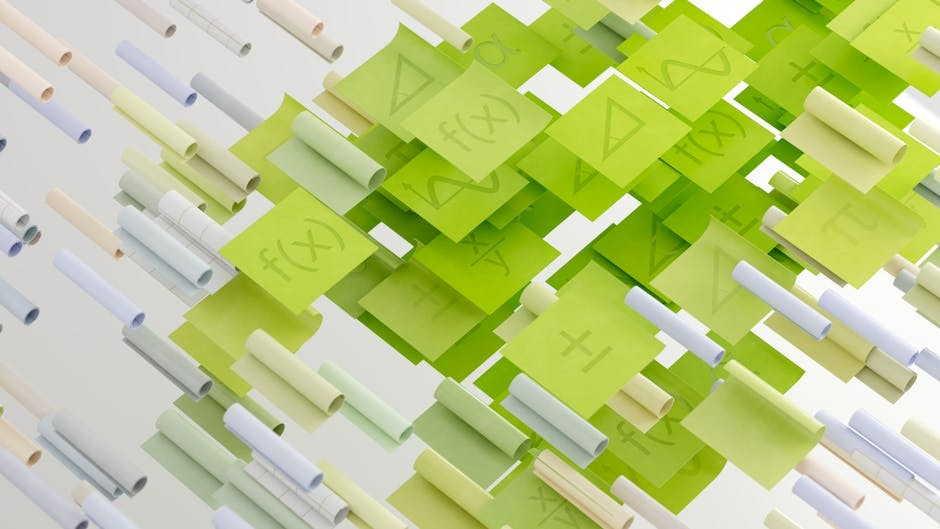
5․3 Modern Applications
Voodoo symbols, particularly veves, have found modern applications in art, spirituality, and cultural expression․ Many practitioners now incorporate these symbols into tattoos, jewelry, and home decor, using them as a connection to their heritage․ Digital platforms have also made veves more accessible, with downloadable PDFs and SVG files allowing artists and enthusiasts to use them in creative projects․ Additionally, these symbols are increasingly featured in educational materials, helping to demystify Voodoo and promote cultural understanding․ In fashion, veves inspire designs, blending tradition with contemporary style․ Their use in meditation and energy work has also grown, as people seek meaningful spiritual tools․ Overall, the modern applications of Voodoo symbols reflect their enduring cultural and spiritual significance, adapting to new contexts while preserving their original essence․
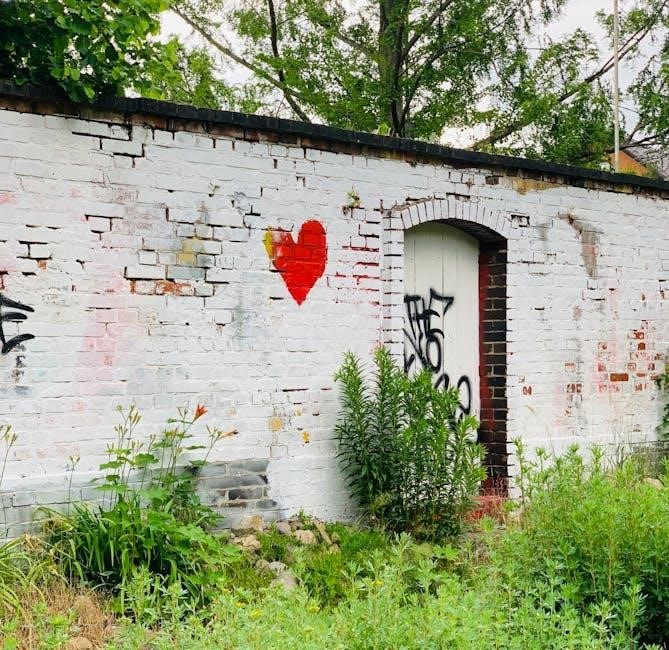
Resources for Voodoo Symbols
Resources like Voodoo Symbols: An Overview and Symbols-Adinkra-and-VeVe offer detailed insights into Vodou symbols, available as PDFs, providing historical context and cultural significance of veves and their uses․
6․1 Availability of PDFs
Voodoo symbols and veves are widely documented in PDF formats, offering detailed insights into their meanings and uses․ Documents like Voodoo Symbols: An Overview and Symbols-Adinkra-and-VeVe provide comprehensive information on traditional African and Haitian Vodou symbols․ These PDFs are accessible on platforms such as Scribd, Google Drive, and academic databases, making them easily downloadable for research or personal study․ They often include high-quality images of veves, such as the Cross, Papa Legba’s symbol, and Erzulie Freda’s veve, along with explanations of their cultural and spiritual significance․ Some PDFs also offer vector graphics in SVG and PNG formats, suitable for rituals, tattoos, or artistic projects․ These resources are invaluable for understanding the historical and ritualistic context of Voodoo symbols, serving as a bridge between tradition and modern applications․
6․2 Online Databases
Online databases offer extensive collections of resources on Voodoo symbols, providing access to PDFs, academic articles, and multimedia content․ Platforms like Google Scholar, JSTOR, and ResearchGate host scholarly works on Vodou traditions, including detailed analyses of veves and their cultural significance․ Websites such as Scribd and Academia․edu feature user-contributed documents, including PDF guides on Voodoo symbols, rituals, and historical context․ These databases often include high-resolution images of veves, such as Papa Legba’s crossroads symbol and Erzulie Freda’s heart motif, along with their meanings․ Additionally, some databases offer e-books and journals that explore the evolution of Voodoo symbols in Haiti and their influence on global spiritual practices․ While some resources require subscriptions or purchases, many are freely accessible, making them invaluable for researchers and enthusiasts alike․ These databases serve as a central hub for exploring the rich, symbolic heritage of Voodoo traditions․
6․3 Recommended Reading
For in-depth exploration of Voodoo symbols, several resources are highly recommended․ “Voodoo Symbols: An Overview” by Misael provides a comprehensive introduction to veves and their significance․ “Ritual Symbols of the Voudou Spirits” by Denise Alvarado delves into the meanings and uses of specific symbols․ Additionally, “Symbols-Adinkra-and-VeVe (1)” offers a comparative study of African and Haitian symbols, available as a free PDF․ Academic articles by scholars like Catherine Beyer and Katherine Smith are also invaluable for understanding the cultural and historical contexts․ E-books on platforms like Google Books and Amazon explore the evolution of Voodoo symbols and their modern applications․ These resources collectively offer a rich understanding of Voodoo symbolism, catering to both researchers and enthusiasts․
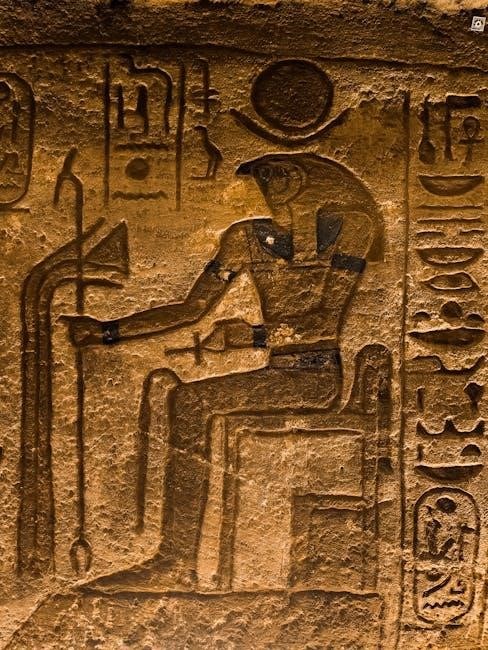
The Future of Voodoo Symbols
Voodoo symbols are evolving with digital art and cultural exchange, ensuring their preservation while embracing modern interpretations, particularly in design and education․
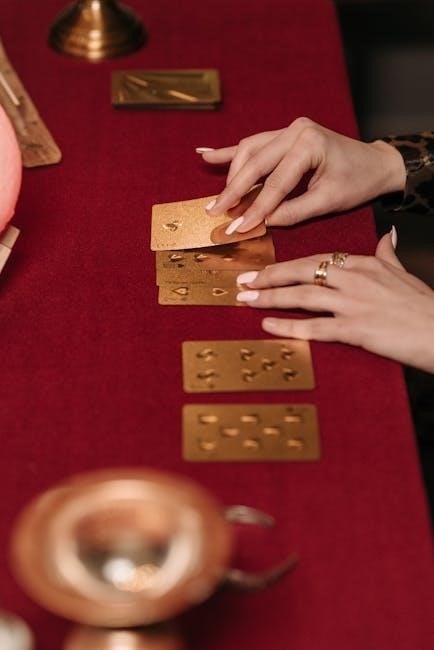
7․1 Modern Interpretations
Modern interpretations of voodoo symbols are expanding their reach through digital art and design, blending traditional meanings with contemporary aesthetics․
Artists and designers are incorporating veves into digital formats, such as PDF templates and vector graphics, making them accessible for various creative projects․
These symbols are also being used in educational materials, fostering cultural understanding and appreciation for Vodou traditions․
Cultural exchange has led to fusion designs, where voodoo symbols are combined with other artistic styles, creating unique and innovative visual representations․
This modern approach not only preserves the cultural significance of voodoo symbols but also introduces them to new audiences worldwide․
7․2 Impact on Popular Culture
Voodoo symbols have significantly influenced popular culture, appearing in art, fashion, and entertainment, sparking curiosity and fascination worldwide․
These symbols, particularly veves, are often used in tattoos, jewelry, and clothing designs, blending spiritual meanings with modern style․
In music videos and films, voodoo imagery adds an air of mystery and exoticism, drawing audiences into captivating narratives․
Moreover, the incorporation of voodoo symbols in digital media, such as PDF templates and vector art, has made them accessible to a broader audience․
Celebrities and artists often embrace these symbols to express cultural connection or spiritual exploration, further amplifying their visibility․
This cultural crossover highlights the enduring allure of voodoo symbols, transcending their traditional origins to inspire contemporary creativity․
7․3 Preservation Efforts
Efforts to preserve voodoo symbols, particularly veves, are underway through digital archiving and educational resources like PDFs and online databases, ensuring their cultural significance endures for future generations․
Cultural organizations and researchers are working to document and study these symbols, providing insights into their historical and spiritual importance․
Community initiatives in Haiti and the diaspora focus on teaching younger generations about veves, fostering a deeper understanding and appreciation of their role in Vodou traditions․
Additionally, the availability of high-quality images and vector art in formats like PDF, SVG, and PNG has made these symbols more accessible for study and creative projects․
These preservation efforts not only maintain the integrity of voodoo symbols but also promote their cultural and historical value worldwide․
